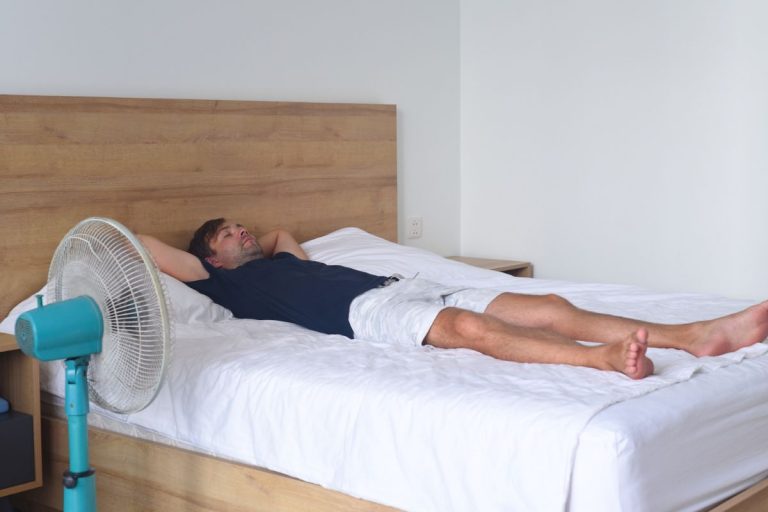Probably one of the main reasons that babies who don’t sleep through the night are such a big issue is that parents don’t have realistic expectations of the sleep patterns of babies. Babies were designed to wake up often at night to feed and cuddle, and keep in mind that many adults wake during the night, too. If our expectations for babies were not so different from our babies’ expectations for themselves, much of this “problem” might disappear.
Following is information on studies that have been done on the typical sleep patterns of babies and young children.
Now infants can get
all their vitamin D
from their mothers’ milk;
no drops needed with
our sponsor's
TheraNatal Lactation Complete
by THERALOGIX. Use PRC code “KELLY” for a special discount!
The relationship between daytime exposure to light and night-time sleep in 6-12-week-old infants.
J Sleep Res. 2004 Dec;13(4):345-52.
Abstract: This project investigated the relationship between exposure to light and 24-h patterns of sleep and crying in young, healthy, full-term babies living at home and following a normal domestic routine. Measures included an ankle worn activity monitor, an external light monitor and the Barr Baby Day Diary in which parents recorded periods of sleep, crying, feeding and other behaviours at 5-min intervals throughout the 24-h period. Fifty-six babies (26 males and 30 females) were monitored across three consecutive days at 6, 9 and 12 weeks of age. There was an early evening peak in crying which was associated with reduced sleep at 6 weeks. Across the trials there was a gradual shift towards a greater proportion of sleep occurring at night. Sleeping well at 6 weeks was a good indication of more night-time sleep at 9 and 12 weeks. Babies who slept well at night were exposed to significantly more light in the early afternoon period. These data suggest that light in the normal domestic setting influences the development of the circadian system.
Night waking, sleep-wake organization, and self-soothing in the first year of life.
J Dev Behav Pediatr 2001 Aug;22(4):226-33
Abstract: Few objective data are available regarding infants’ night waking behaviors and the development of self-soothing during the first year of life. This cross-sectional study examined 80 infants in one of four age groups (3, 6, 9, or 12 mo) for four nights by using videosomnography to code nighttime awakenings and parent-child interactions. A large degree of variability was observed in parents’ putting the infant to bed awake or asleep and in responding to vocalizations after nighttime awakenings. Most infants woke during the night at all ages observed. Younger infants tended to require parental intervention at night to return to sleep, whereas older infants exhibited a greater proportion of self-soothing after nighttime awakenings. However, even in the 12-month-old group, 50% of infants typically required parental intervention to get back to sleep after waking. Results emphasize the individual and contextual factors that effect the development of self-soothing behavior during the first year of life.
Attachment and sleep: a study of night waking in 12-month-old infants.
Dev Psychobiol 2001 May;38(4):274-85.
Abstract: Sleep regulation was examined from a mother-child relational perspective. Although the link between sleep and attachment has been previously discussed, empirical support is rather limited. This report, which is a part of a longitudinal investigation of sleep in infancy, examines the association between the child’s sleep pattern and mother-infant attachment in 94 mother-infant dyads. At 12 months each dyad participated in the Strange Situation procedure; 77% were securely attached. Mothers’ description of the infant’s fussiness was not found to predict the attachment pattern, but was associated with the sleep habits. It was found that 55% of the secure and 60% of the ambivalent children were described as night wakers. To a sub-group of 37 infants, a sleep monitor (actigraph) was provided for two nights’ recordings. The frequency of the objective awakenings was higher than what mothers reported but similar for the secure and insecure infants. The findings confirm that night waking at the end of the first year is a common developmental phenomenon. Among this group of non-risk infants, sleep characteristics were only marginally associated with the quality of the child’s attachment relationship.
In this study, part of the Avon Longitudinal Study of Pregnancy and Childhood (ALSPAC), researchers surveyed the parents of 640 babies. Some of the results:
- Only 16% slept through the night at six months old — 84% were not sleeping through the night at 6 months
- 17% woke more than once per night, ranging from twice to eight times
- 5% woke once every night
- 9% woke most nights
- 50% woke occasionally
- 16% of six-month-olds had no regular sleeping pattern
The sleep patterns of normal children.
Medical Journal of Australia 1994 Aug 1;161(3):202-6.
The above study is the definitive work on sleeping habits of (Australian) children to 38 months. The researchers surveyed 3269 parents, with a 96.5% response rate, over a one week period. The parents had to report on their child’s sleeping habits over the past 24 hours, plus answer a few questions related to their perceptions of their child’s sleep behavior.
What did they find?
- There is a wide range of normal childhood sleep behavior.
- Circadian rhythm is not well established until four months of age.
- Daytime sleep becomes less regular with increasing age, the most marked reduction in length occurs around 3 months of age. However, a surprising 11% under 3 months of age don’t have a daytime sleep every day.
- Frequent night waking that disturbs parents is common from 4-12 months (12.7% disturb their parents 3 or more times every night).
- Night time settling requires more parental input from 18 months.
- Nearly a third of parents have a significant problem with their child’s sleep behavior.
- Sleeping through the night: 71.4% did this on at least one occasion by 3 months of age, but many of these relapse into more frequent waking in the 4 to 12 month period. It is not until after 24 months that regular night waking (requiring attention) becomes much less common.
Although this study did not address breastfeeding, it is relevant because a lack of understanding of “normal” sleep patterns can lead to supplementing, early solids, belief there is not enough milk, etc. The authors claim it also leads to misdiagnosis of gastro-esophageal reflux (GER) and overuse of sedative medication. A worrying 31% of 25-38 month-old children were disciplined (mostly smacking) to get them to settle. 27% of parents let their children cry, 11% at less than one month.
A longitudinal study of night waking in the first year.
Child Care Health Dev 1991 Sep-Oct;17(5):295-302.
Abstract: A longitudinal study of the development of sleep patterns addressed the issue of continuity and change in night waking in the course of the first year. Mothers of 118 infants, who took part in a follow-up study of normal babies, completed a sleep questionnaire at 3, 6, 9 and 12 months. Regular night waking was a common characteristic throughout the first year:
|
Baby’s age
|
% babies waking at night
|
|
3 months
|
46%
|
|
6 months
|
39%
|
|
9 months
|
58%
|
|
12 months
|
55%
|
[/su_table]
The number of awakenings per night was a function of age. Following a decline in the number of interruptions from 3 to 6 months, an increase in night waking at age 9 months was recorded. Although the methodology does not lend itself to an objective validation of the changes in sleep-wake states, nor is it suitable for causal explanations, it is, nevertheless, important to note this profile. The increase in night waking towards the end of the first year coincides with significant socio-emotional advances which characterize this developmental stage.
Sleep patterns of New Zealand infants during the first 12 months of life.
J Paediatr Child Health. 1990 Apr;26(2):85-8.,
Abstract: The sleeping patterns of 874 infants aged 1-12 months were recorded by parents over a 6 day period. The most striking feature of the results was the wide range in total hours slept by infants of the same age, for example, the average total sleeping time per 24 h period for 4 month old infants was 14.8 h with a range of 11.0-19.3 h. Furthermore, over the 6 day period, individual infants showed wide variations in their sleeping times with a range as great as 12 h. Despite these wide variations, several clear trends emerged: from 1 to 8 months, a decrease with age of the average number of hours slept per 24 h period; and from 8 to 12 months, and a continuing shift towards a dominance of night over day sleep. The frequency of night wakings was, on average, 77%, a finding that contrasted sharply with parental perception of frequency of night waking; the transition from bassinet/carrycot to cot was most common between 3 and 4 months of age; 25% of babies slept with the light on, 9% used a dummy, and 37% sucked their fingers; first-born infants woke significantly less often at night than those with one or more sibling. These results provide an important comparative data set on the sleep patterns of infants.
Sleep/wake patterns of breast-fed infants in the first 2 years of life.
Pediatrics. 1986 Mar;77(3):322-9.
Abstract: Published norms for infant sleep/wake patterns during the first 2 years of life include an increase in length of maximum sleep bout from four to five to eight to ten hours by 4 months but little decrease in total sleep in 24 hours from 13 to 15 hours. Thirty-two breast-fed infants were followed for 2 years and data collected on 24-hour patterns of nursing and sleep. Infants who were breast-fed into the second year did not develop sleep/wake patterns in conformance with the norms. Instead of having long unbroken night sleep, they continued to sleep in short bouts with frequent wakings. Their total sleep in 24 hours was less than that of weaned infants. This pattern was most pronounced in infants who both nursed and shared a bed with the mother, common practices in many nonwestern cultures. The sleep/wake development accepted as the physiologic norm may be attributable to the early weaning and separated sleeping practiced in western culture. As prolonged breast-feeding becomes more popular in our society, the norms of sleep/wake patterns in infancy will have to be revised.
More information
- Sleeping through the night (this website)
- Nursing to Sleep and Other Comfort Nursing (this website)
- The Family Bed (this website)
- Gerard CM, Harris KA, Thach BT. Spontaneous Arousals in Supine Infants While Swaddled and Unswaddled During Rapid Eye Movement and Quiet Sleep. Pediatrics 2002; 110: e70. “Swaddling… resulted in shorter arousal duration during REM sleep and more REM sleep…. a safe form of swaddling that allows hip flexion/abduction and chest wall excursion may help parents keep their infants in the supine sleep position and thereby prevent the sudden infant death syndrome risks associated with the prone sleep position.”





